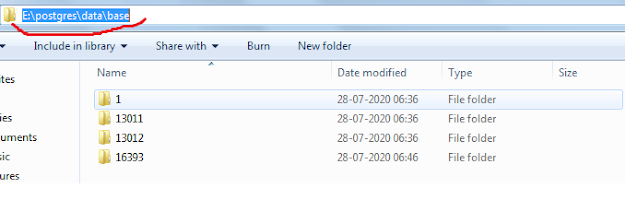Physical location of datafiles in PostgreSQL
Data Directory
Basic Operations on MySQL Users
In this article we are going to discuss about
different operations on mysql user like lock, unlock, grant, revoke etc.
- Lock-unlock
- Expire-unexpired
- Check privileges
- Revoke privileges
- Change password
- Rename user (single user, multiple user)
- Drop user
select
user,host,authentication_string,password_expired,account_locked from user where
user like 'test%';
We can all accounts are unlocked and password not expired.
We will perform operations one by one
LOCK and UNLOCK
Let’s lock and unlock test@%
Locking the account
alter user ‘test’@’%’ account lock;
Checking the status
select user,host,authentication_string,password_expired,account_locked
from user where user like 'test%';
Unlocking it again
alter user ‘test’@’%’ account unlock;
This will affect only test@% not test@localhost, both are different users.
EXPIRE
Let’s expire password for 'test'@'localhost' and
revert it
alter user ‘test’@’localhost’ password expire;
Verification
select
user,host,authentication_string,password_expired,account_locked from user where
user like 'test%';
Password reset using values
alter user ‘test’@’localhost’ identified with
‘mysq_native_password’
as ‘*5BA7FD292EB16719F76792ECAF589CE4B62CCC94’;
Verifying status again
select
user,host,authentication_string,password_expired,account_locked from user where
user like 'test%';
CHECK PRIVILEGES
show grants for ‘test2’@’locahost’;
REVOKE PRIVILEGES
In below example grants of test2@localhost has been
revoked
show grants for ‘test2’@’localhost’;
revoke SELECT, INSERT, DELETE CREATE, DROP, RELOAD,
ALETER ON *.* from ‘test2’@’localhost’;
flush privileges;
show grants for ‘test2’@’localhost’;
CHANGING PASSWORD
In below example password of test3@% has been
altered.
select user, host, authentication_string,
password_expired, account_locked from user where user like 'test%';
alter user ‘test3’@’%’ identified by ‘Hudrt#12’;
select user, host, authentication_string,
password_expired, account_locked from user where user like 'test%';
RENAME USER
show grants for ‘test1’@’localhost’;
Single user
In mysql we can rename the user without dropping it but modification needs to be carried wherever it is not getting used, grants will not get altered
Single user- in below example ‘test1’@’localhost’
user has been renamed with ‘xyz1’@’localhost’
rename user ‘test1’@’localhost’ to
‘xyz1’@’localhost’;
show grants for ‘xyz1’@’localhost’;
select user, host, authentication_string,
password_expired, account_locked from user where user like xyz1%';
Multiple user
select user, host, authentication_string,
password_expired, account_locked from user where user like 'test%';
rename user ‘test’@’localhost’ to ‘abc’@’%’,
‘test’@’%’ to ‘abc’@’localhost’;
select user, host, authentication_string,
password_expired, account_locked from user where user like 'test%';
select user, host, authentication_string,
password_expired, account_locked from user where user like 'abc%';
DROP USER
In below example we are dropped abc user
select user,host from user where user=’abc’;
drop user ‘abc’@’localhost’;
select user,host from user where user=’abc’;
drop user ‘abc’@’%’;
select user,host from user where user=’abc’;
Oracle : STATISTICS_LEVEL parameter
This particular parameter has below three possible settings
- BASIC
- TYPICAL
- ALL
Transferring file from one server to another server [FTP, SFTP, SCP etc]
Atikh Shaikh
MongoDB, mysql, oracle, Oracle 12c, PostgreSQL
No comments
![]()
- ftp
- sftp
- scp
- windows software (Filehippo, WinScp , FileZilla etc)
1. FTP transfer
User :
Password :
ftp> bin -- to transfer in binary format
ftp> cd
ftp> put/get
ftp>bye
2. SFTP transfer
As name suggest SFTP is secure file transfer protocol, it uses full security and authentication functionality of SSH. SFTP is new utility compared to FTP and recommended to use instead of FTPThis utility can be used using below commands
$sftp
password : ***
sftp>cd
sftp> put/get
sftp> bye
3.SCP
SCP is used for securely copying files from one server system to another server system.Below is syntax for the same
scp [OPTION] [user@]src_server:] file1 [user@]target_server:]file2
where
[user@]src_server:] file1 -- source file
[user@]target_server:]file2 -- destination file
for example
scp text_file.txt
4. Windows software
There are number of freely available software on internet, choose your favourite one and transfer files using simple GUIBelow are few I came across
- FileZilla
- Filehippo
- WinScp
- FireFTP

